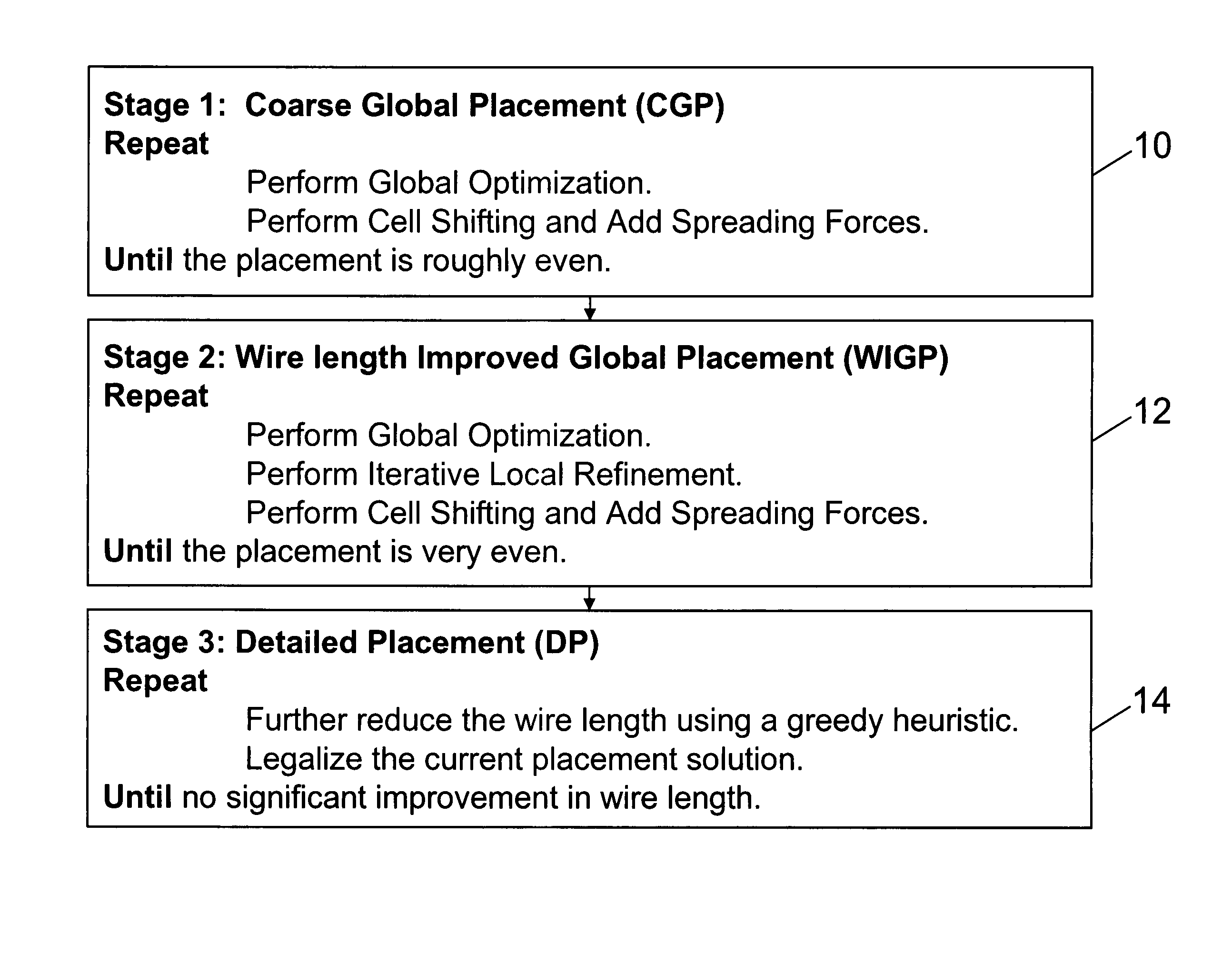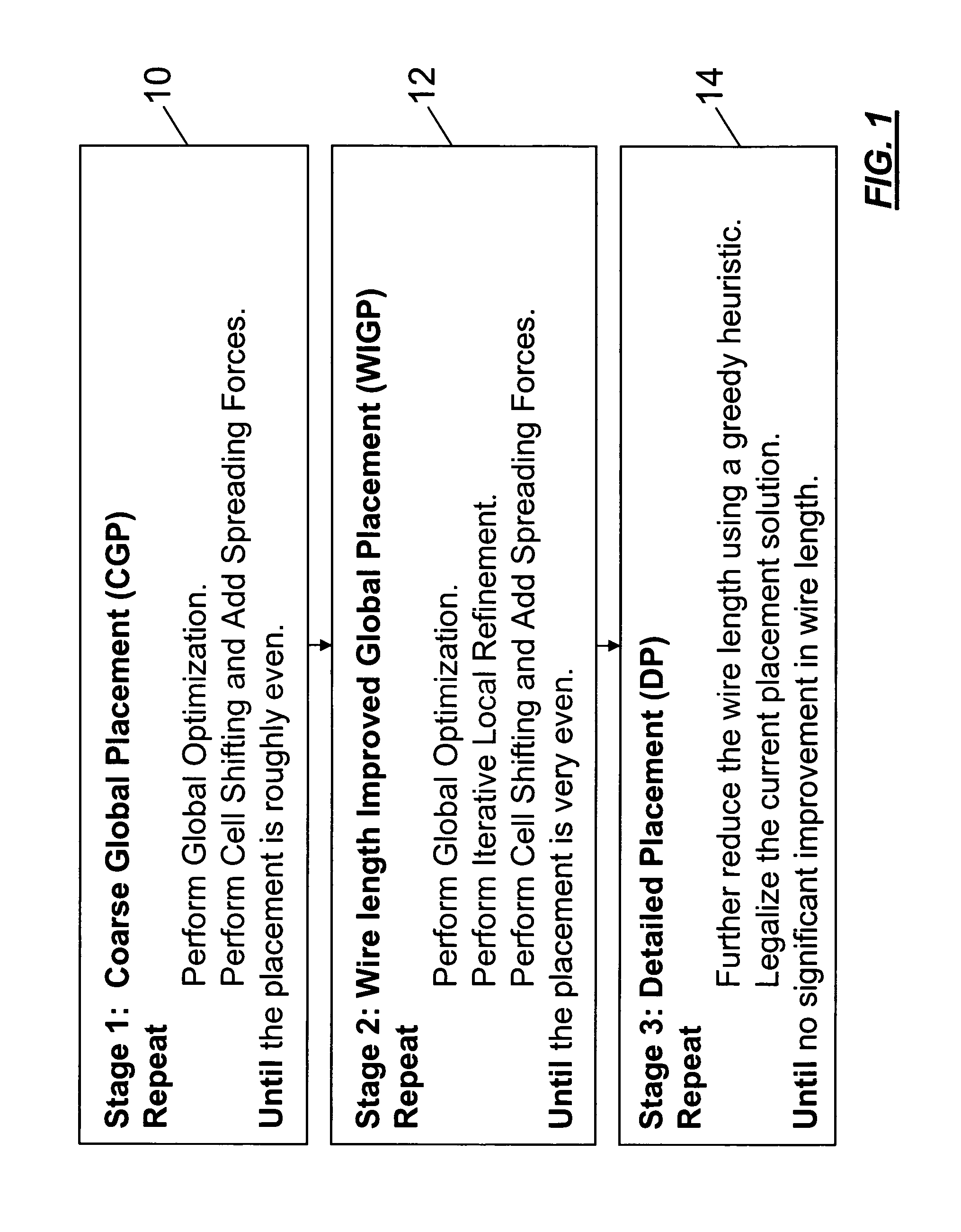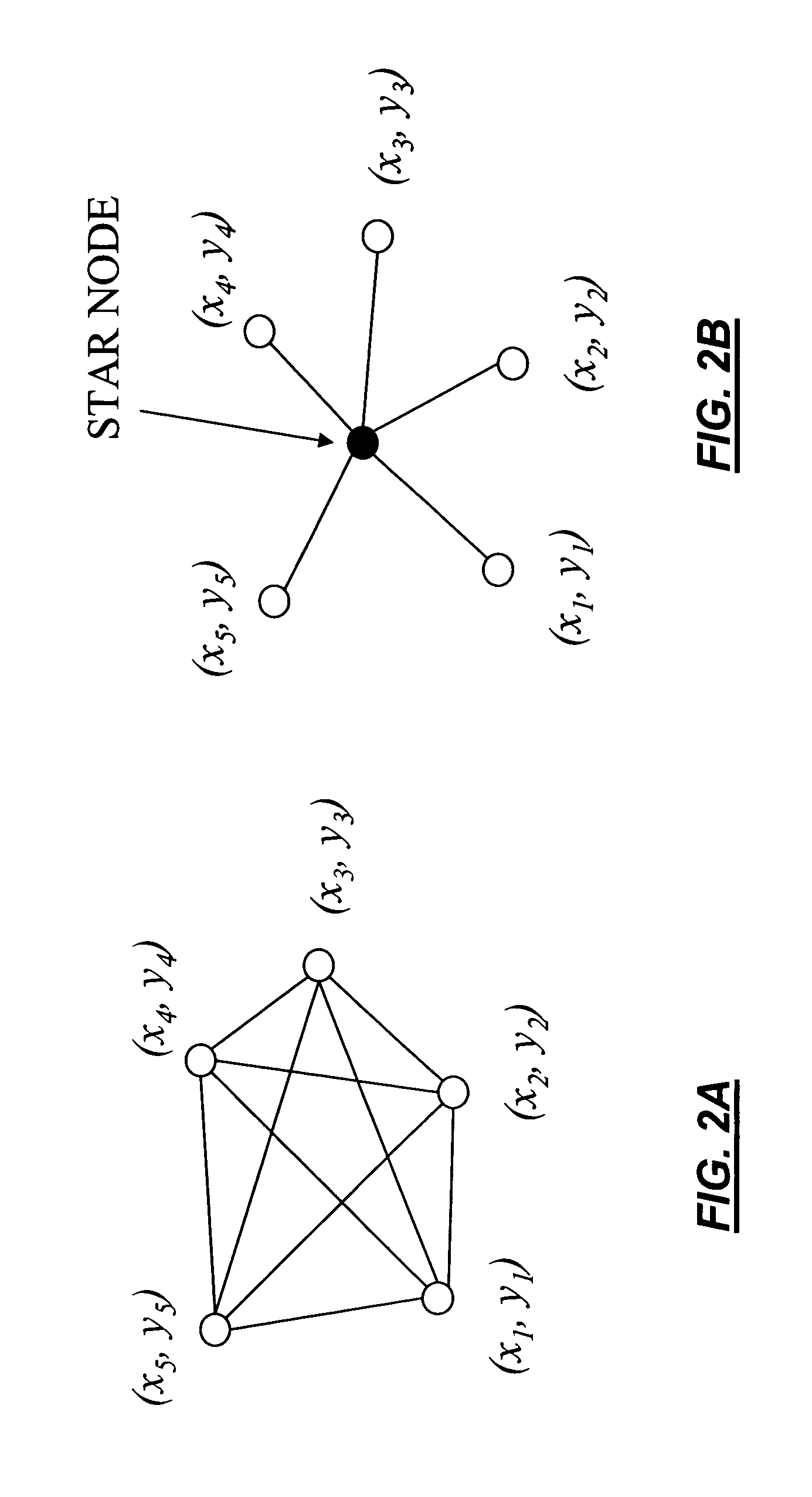Fastplace method for integrated circuit design
a fastplace and integrated circuit technology, applied in computer aided design, program control, instruments, etc., can solve the problems of increasing the size of the day, the inability of quadratic objective alone to give the best possible wire length, and the problem of remaining, etc., to achieve efficient analytical placement, eliminate cell, and fast
- Summary
- Abstract
- Description
- Claims
- Application Information
AI Technical Summary
Benefits of technology
Problems solved by technology
Method used
Image
Examples
Embodiment Construction
1. Overview
[0021]The methodology of one embodiment of the present invention is sometimes referred to as FastPlace and essentially consists of three stages as shown in FIG. 1. FIG. 1 illustrates the first stage 10, the second stage 12, and the third stage 14. The aim of the first stage is to minimize the wire length and spread the cells over the placement region to obtain a coarse global placement. It is composed of an iterative procedure in which we alternate between Global Optimization and Cell Shifting. Global Optimization involves minimizing the quadratic objective function. During Cell Shifting, the entire placement region is divided into equal sized bins and the utilization of each bin is determined. The standard cells are then shifted around the placement region based on the bin in which they lie and its current utilization. Finally, a spreading force is added to all the cells to account for their movement during shifting.
[0022]The second stage is to refine the global placemen...
PUM
 Login to View More
Login to View More Abstract
Description
Claims
Application Information
 Login to View More
Login to View More - R&D
- Intellectual Property
- Life Sciences
- Materials
- Tech Scout
- Unparalleled Data Quality
- Higher Quality Content
- 60% Fewer Hallucinations
Browse by: Latest US Patents, China's latest patents, Technical Efficacy Thesaurus, Application Domain, Technology Topic, Popular Technical Reports.
© 2025 PatSnap. All rights reserved.Legal|Privacy policy|Modern Slavery Act Transparency Statement|Sitemap|About US| Contact US: help@patsnap.com



